Content:
Pelargonium rosebud is no different in beauty from roses. A floral plant native to the Geranium family, but has nothing to do with geraniums. It is considered a separate species of the family. Their difference is in everything: flower form and deciduous. The flower does not like low temperatures, fragile and delicate. Rosebud is unable to hibernate in open soil and does not tolerate cultivation in cold regions.
Pelargonium rosebud: description
A perennial, light-loving plant that brings aesthetic pleasure to gardeners is pelargonium. Just like geranium, it has a well-developed root system, which is why it was included in the Geraniev family. The herbaceous stem is stiff and lignified in the lower part of mature plants. Differs in lobed leaves, cutouts on which occupy no more than 1/3 of the half-width. Fruiting is boll-shaped.
3 methods of propagation are used: dividing bushes, planting seeds or cuttings. Since the birthplace of culture is South Africa, it is very thermophilic. She needs abundant, but rare soil moisture.
For the first time in Europe, the plant was brought back in the 17th century. Already in the 18th century, they began to propagate and grow it as a separate floral species.
It is believed that pelargonium appeared as a result of random cell mutation. Over time, scientists have developed a flower that resembles a modern plant, crossing different types of flowers. The rosebud pelargonium was officially introduced as a floral species in 1870.
Rosebudna belongs to the varieties of terry zonal pelargonium. Outwardly, the flower bud looks like a half-blossoming rose. Rosebud is often confused with shrub roses. The second name of the flower is rosaceous pelargonium. The only difference between these crops is in the shape of the leaves. Inflorescences are represented by small spherical buds.
Plant characteristic
Pelargonium is one of the varieties of geraniums, belongs to the category of rose-like, which more and more gardeners want to grow at home. The varietal features of shrubs are considered to be compact in size and buds that do not have aroma. The height of the bushes varies from 60 to 80 cm. The culture is also valued for its unpretentious maintenance.
In order for a culture to please with abundant and lush color, the right content is necessary. First of all, it is necessary to provide the soil with moderate moisture and hide the plant from direct sunlight. In case of violation of elementary recommendations, the deciduous part will turn pale, outwardly the bush will lose its splendor and bright aesthetic appearance.
The plant does not tolerate lingering cold and frost. The best temperature for pelargonium is considered to be 10 degrees above 0. In such conditions, the bushes can survive the winter without damage. The renewal of the soil composition is considered obligatory every year. You can periodically change your habitat. All this is needed to enrich the soil with various nutrients and microelements, and the earth needs to be saturated with oxygen.
The best soil mixture for a plant is a mixture of a substrate:
- From the sod land;
- Peat;
- Coarse sand;
- Perlite;
- Humus.
When replanting plants, you need not only to change the soil, but also to update the bushes by cutting off old branches. It is also important to apply complex mineral fertilizers several times per season.
Characteristics of species and varieties
Several intraspecific groups can grow at home:
- The ampelous species has a creeping stem that does not grow upward. Feature - cascading foliage. Ivy plant, hanging down, used to decorate the garden;
- The zonal view is enduring. Its height reaches 80 cm. The foliage of the species is dark, with a smooth transition to light colors. The fluffiness of the leaves is considered a feature. The most popular variety, which is not planted outdoors. The plant, although hardy, is still demanding;
- The dwarf (miniature) species is distinguished by the compactness of the bushes. No need for shaping. This variety is preferred to grow not only in the open field, but also in limited areas. Flowers look very impressive in small pots, since the flowering is abundant, small lush bushes are formed. The plant is relatively picky in content.
Each of these subspecies has many different varieties, which differ in color, shape of buds and characteristics of content. The most popular ones are the Pelargonium rosebud varieties Red scarlet, Rosebud supreme, Arctic, Snow and many others.
It is necessary to consider the description of popular varieties:
- Vectis rosebud is a small-looking, mature shrub that looks attractive. Good for shaping. The main advantage is considered to be abundant, long flowering. The bud is bright red. The inside of the flower petals is darker than the outside;
- Pelargonium Rosebud Supreme - blooms with bright crimson, thick, double buds. The inside-out bud is different in color. The inside of the bud is white, which looks unusual. The bushes are straight, strong. The inflorescences of Rosebud supreme pelargonium are dense, bloom for a long time, with proper care, flowering can be extended for the whole year;
- Pink rambler is one of the popular varieties. A bright and lush bush with corrugated leaves. The flower bud is bright pink with red impurities. The front side is lighter;
- Margaretha Pelargonium is a variety of royal geraniums used exclusively for decorative purposes. Blossoms are arranged in several rows, which in appearance resemble small bouquets of unopened roses. The foliage is distinguished by curly outlines resembling a border. The height depends on the location and can reach 80 centimeters;
- Red pelargonium Rosebud red is a plant with red double inflorescences. Differs in long and abundant flowering. The inflorescences themselves are thick, lush, dense. No need to form bushes. Optimum temperature for growing: 25 degrees in summer, 15 to 20 degrees in winter. The flower is grown indoors;
- Pelargonium baby rosebud is a compact plant. The buds are red, with a faint crimson tint, white in the middle. Leaves are inconspicuous, of the usual shape;
- Beverly park pelargonium is distinguished by large flower buds, double, apricot color. At the edges, the color of the inflorescences is lighter. The leaves are green, darken towards the center.
Features of planting and care
When comparing all types of plants, pelargonium is finicky. It only needs to be planted in pots. It is necessary to protect the flower from the influence of winds, rain and temperature changes. The room should have regular air circulation, without drafts. The plant needs full lighting, so it needs to be unwrapped periodically.With the arrival of the warm season, the pots can be taken out into the fresh air. The soil composition needs to be changed once a year. Pelargonium should be protected from direct sunlight.
Major diseases
Like all plants, pelargonium can be sore. Plants can also suffer from pest attacks. Problems encountered when growing pelargonium:
- Withered leaves are a sign of high temperatures and insufficient watering;
- Changes in foliage color - excess moisture and insufficient lighting;
- Spots on the leaves are a sign of viral infections;
- Inflorescences dry up - a sign of a fungus;
- Gray rot.
Any problem is eliminated by chemical treatment or by ensuring proper conditions of detention.
Growing from seeds
For many, growing pelargonium from seeds is a long process. Planting begins around the end of February. Seeds are planted in moist peat soil, under a film. The first seedlings appear within 5-7 days. Next, you need to give a few days to root the plants, you can start picking. Now all that remains is to wait for the plant to get stronger and begin to bloom.
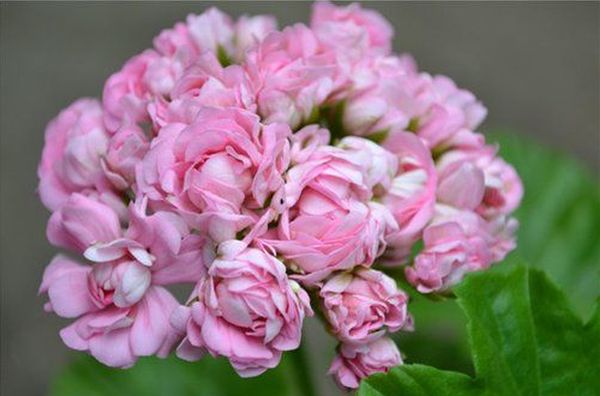

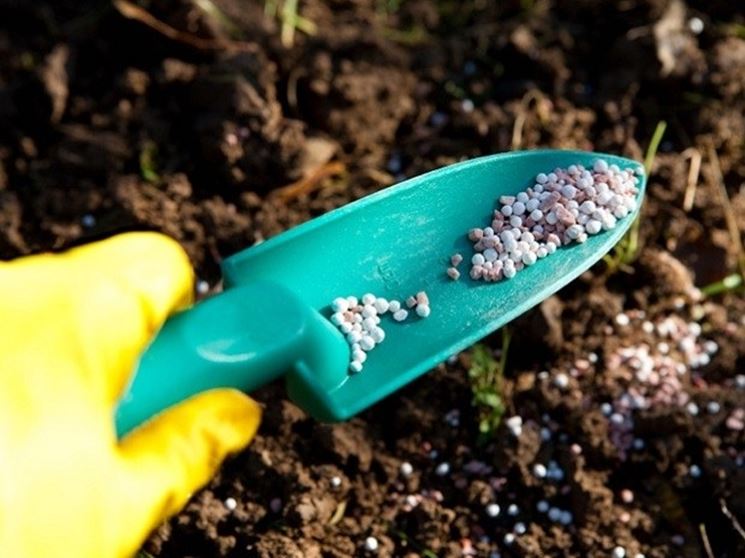

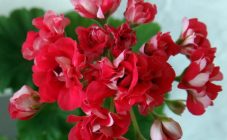
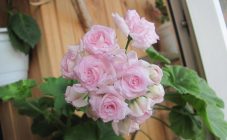
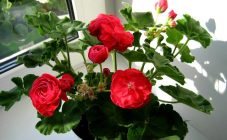
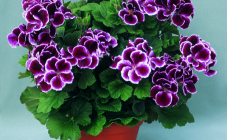
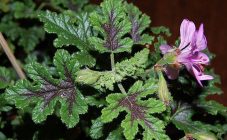
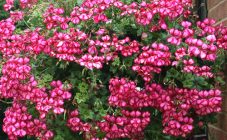







the article is nonsense from start to finish, the author does not own the material at all! Level - kindergarten, middle group